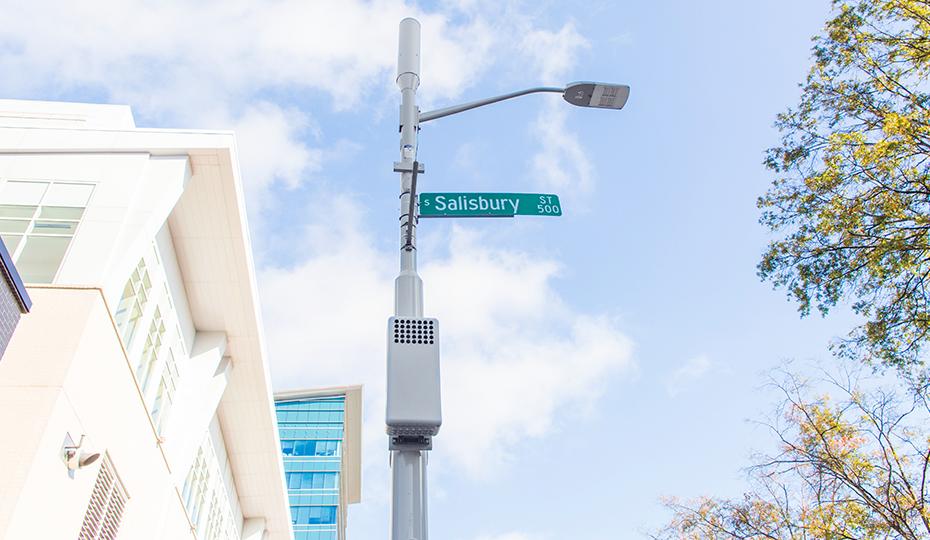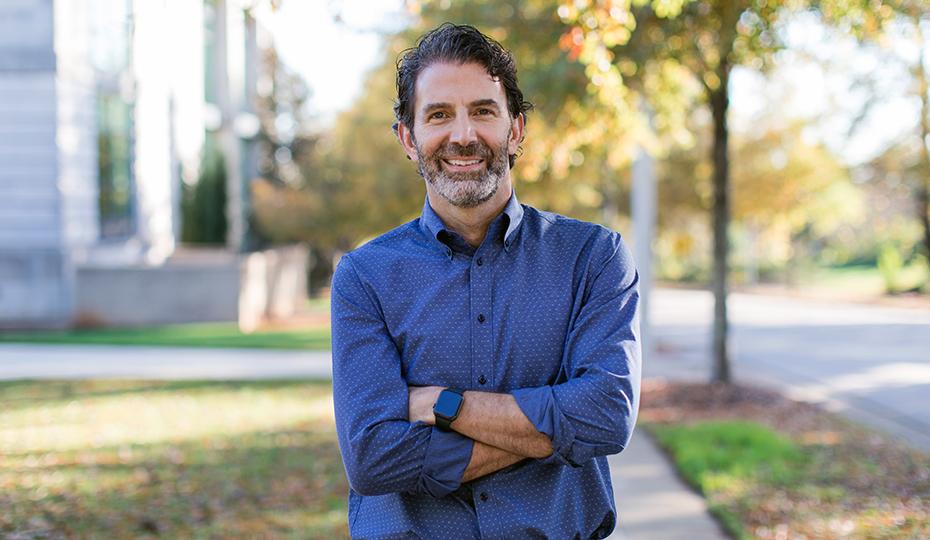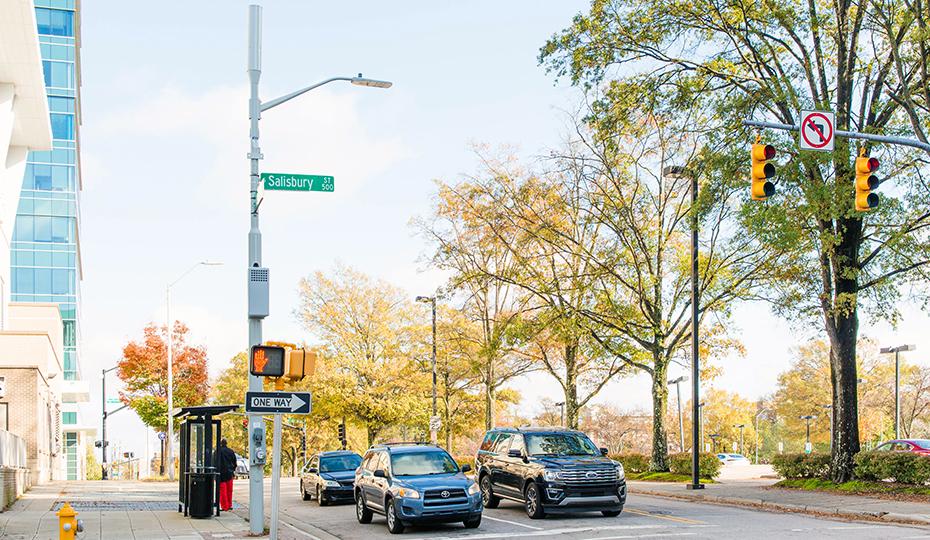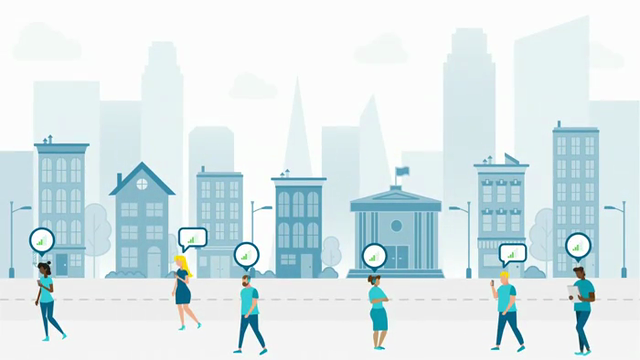Utilities Collaborate to Expand 5G Networks Across the Country
Duke Energy is working with telecom companies and municipalities to expand wireless capacity
You probably don’t pay attention to streetlights in your neighborhood, but they are at the forefront of ensuring speedy wireless service for your phone and other devices.
Duke Energy has been leading an effort to improve how utilities and wireless companies deploy digital solutions in a faster, cost-effective and appealing way that benefits communities. The company recently led an effort to locate hundreds of 5G small cell technology on streetlights in uptown Charlotte and other cities.
Sounds mundane, yet it is one of the country’s most successful examples of electric utility and wireless provider collaboration.
The result? You get better cellular service and the streetscape is less cluttered and more appealing.
As telecommunications companies expand their 5G networks across the country, they will need millions of small cell installations for a strong signal to your home, businesses, car and public places. To eliminate the need for a pole that only provides 5G coverage, companies can use colocation, an approach that bundles the company’s antennas and radios on one structure, such as a power pole or streetlight.
The equipment on streetlights is housed in a box on the pole and a cylinder atop the pole.
“Duke Energy is saying, ‘We can invest in a streetlight in Charlotte or any of its cities that looks a whole lot better.’ That makes the municipality very happy,” said Aryeh Fishman, associate general counsel for regulatory legal affairs at the Edison Electric Institute (EEI). “This is an area where Duke Energy is leading, particularly with integrated street lighting.”
EEI hosted a series of webinars highlighting the colocation efforts of Duke Energy, Xcel Energy and Southern Company. More than 30 utilities typically listen and ask questions as they share what they’ve learned.
To promote collaboration on a broader scale, Duke Energy’s Customer Solutions team is working with the company's utility operations team and wireless carriers to determine how best to colocate 5G technology on power poles in neighborhoods, said David Hatcher, Duke Energy managing director of infrastructure solutions.
Colocation, Hatcher said, is a more complicated engineering design than a standard power pole, so the company is learning how to install the technology in a way that preserves the safety and the reliability of the grid while meeting the wireless carrier’s needs.
"The more it’s used for electricity and communication,” he said, “the higher the value to our communities.”
What do wireless carriers get out of the collaboration?
“Leveraging existing assets when they are available becomes very critical,” said Majid Khan, a Verizon managing director of strategy & business development.
“Our collaboration with Verizon has been significant – improving service for our customers, in a manner that meets our communities' needs, cost-effectively and timely,” said Michael Luhrs, Duke Energy vice president of market solutions and innovation. “We want to expand this collaboration to other aspects of smart cities development.”
Duke Energy’s Customer Solutions team and EEI have advocated with the Federal Communications Commission for small cell colocation on streetlights.
So far there are more than 1,400 5G small cell nodes on Duke Energy streetlights and 500 more in the pipeline. Cell antennas have been placed on Duke Energy’s big transmission towers since the 1990s. There are about 600 of those antennas sending 4G and 5G signals over long distances. The small cells provide coverage over shorter distances.
Duke Energy benefits from the partnership by solving customer problems in a way that expands the streetlight business – the company is selling an attractive 5G integrated streetlight that cities and wireless companies value.
Hatcher said the company is collaborating in more than a dozen cities to replace streetlights with integrated streetlights, including Greensboro and Raleigh in North Carolina and St. Petersburg in Florida. The company is also working with Verizon on a pilot project to test smart control nodes on streetlights in a number of cities.
The company is also adding 5G technology to its own infrastructure on the office building being constructed on Tryon Street in Charlotte and in the power grid as equipment is replaced with equipment that enables 5G, said Genevieve Burkindine, director of IT telecommunications. That will reduce costs and increase 5G capability.
The COVID-19 pandemic has highlighted the need for connectivity, especially in rural areas.
“How can Duke Energy help bridge the digital divide?” said Swati Daji, senior vice president of customer solutions and strategies. “Customer Solutions is working with the company’s grid and telecom teams to see if we can support connectivity in our communities as we update the grid to make it smarter and more resilient. Duke Energy wants to be part of the solution to help people connect.”
The innovation is coming, said EEI’s Fishman, from energy companies collaborating with municipalities and wireless carriers.
“They are finding ways to gain efficiencies. And you’re getting the 5G experience on an integrated streetlight that looks better. You’re getting a set of benefits to the company and the community.”
Energy companies are expanding the safe, reliable power grid in a way that hasn’t been done before.






